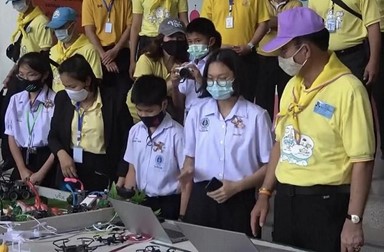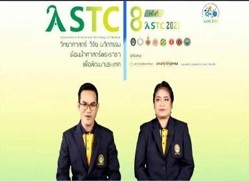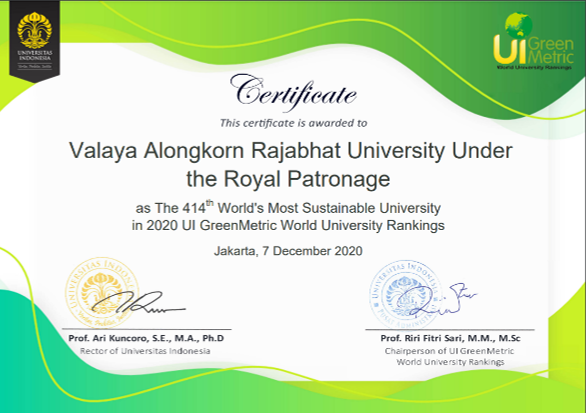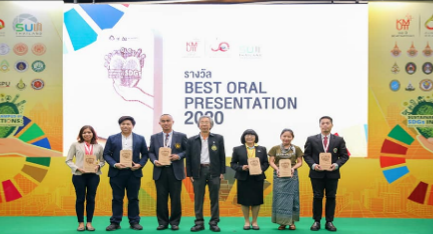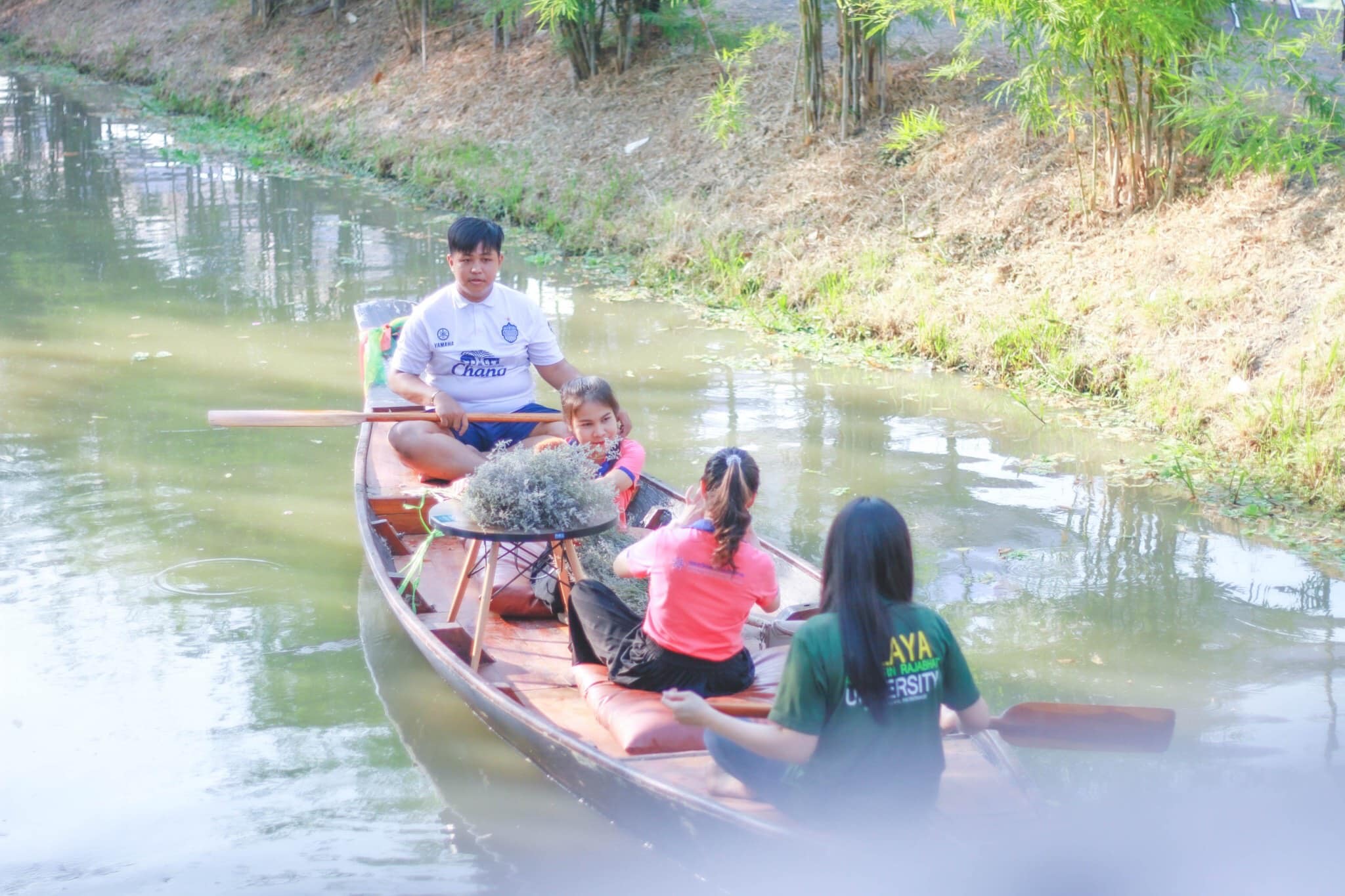
In 2022, there are 7,556 students in total, attending the university
Partnerships for the goals (SDG 17)
17.2 Relationships to support the goals
17.3.1 – Please indicate if your university publishes progress against SDG1
In 2022, there are 7,556 students in total, attending the university. Valaya Alongkorn Rajabhat University under the Royal Patronage (VRU) consists of 8 faculties and colleges including Faculty of Education, Faculty of Management Sciences, Faculty of Science and Technology, Faculty of Industrial Technology, Faculty of Agricultural Technology, Faculty of Humanities and Social Sciences, College of Innovation Management and the Graduate School. VRU focuses on using the ABCD Model, which consists of A: Active Learning, B: Blended Learning, C: Collaborative Learning, and D: Design Thinking for Learning Outcome in teaching both undergraduate and graduate students. The total number of students in 2022 can be classified as follows:
Table 1 The total number of students classified by the type of students
|
Type of students |
The number of students |
| 1.Undergraduate students |
7,450 |
| 1.1 Undergraduate full-time (Mon-Fri) students |
5,683 |
| 1.2 Undergraduate full-time (Sat-Sun) students |
1,767 |
| 2. Graduate students |
106 |
|
Total |
7,556 |
In 2022, there are 1,978 students receiving financial aid. Regarding VRU students’ financial support, the university has assigned the Student Development Division to facilitate the low income students in securing financial aid to complete their studies. The sources of financial aid can be divided into 3 forms as follows:
- Government-funded student loans consist of
1.1) Student Loan Fund (SLF) provides educational opportunities for students who come from low income families by lending money for their tuition fees and other educational expenses. The borrowers will be responsible for repaying their student loans upon their graduation within 2 years.
1.2) Income Contingent Loan (ICL) provides a fund for students in higher education. The loan covers the cost of tuition fees and other educational expenses. The borrowers are responsible for repaying their loans upon their graduation when their income has reached the paymentable threshold specified by the Government.
2) University funding – VRU partners with both public and private organisations to secure funding. This will be allocated to VRU students who have financial difficulties considered by the Student Affairs Committee.
3) External funding – VRU coordinates with the external organisations who are willing to be our funding sources. The students who apply for funding will be shortlisted and the information of the shortlisted students will be submitted for the further selection process.
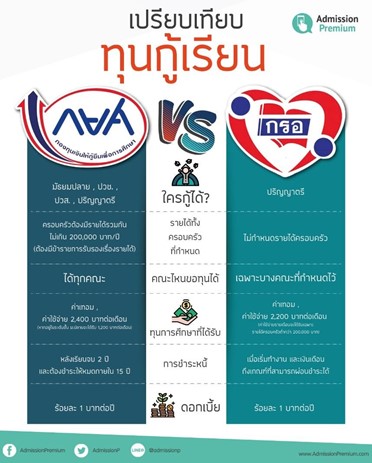
Figure 1 The differences between Student Loan Fund and Income Contingent Loan
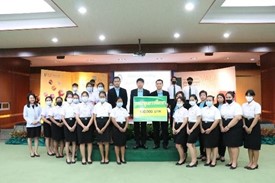
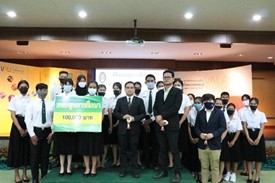
Figure 2 Scholarship Award Ceremony
Table 2 The number of low income students receiving the financial aid
| Type of funding | Number of students |
| 1. Government-funded student loans |
1,679 |
| 2. University funding | 240 |
| 3. External funding | 59 |
| Total | 1,978 |
In addition, the Student Development Division at VRU has compiled a list of students confirmed to study in our institutions and required funding through the TCAS system which is the central admissions system, to the Equitable Education Fund (EEF). EEF aims to provide financial support to the poor and exceptionally poor students with equal educational opportunities. Currently, there are 35 students who have the status of poverty, and 24 students who have the status of exceptional poverty. Hence, there are a total number of 59 students who receive funding from EEF.
VRU is a higher education institution for local development that develops and promotes the capabilities of local communities to enhance society. VRU uses this concept as a guideline for formulating university development strategies. Therefore, in order to achieve the goal of becoming a university for local development, VRU has provided financial aid for all poor and vulnerable students. There is no minimum number of students limited for receiving financial aid from the university. VRU helps all students who have financial problems, even though this kind of support is not compulsory as specified by the Ministry of Higher Education, Science, Research and Innovation (MHESRI). In the academic year 2020, there are 2,163 low income students in total, receiving financial aid from government-funded student loans, university funding and external funding, of which, 510 students have successfully completed their studies.
Provide support (e.g. food, housing, transportation, legal services) for students from low income families to enable them to complete university.
☑ Free
☑ Subsidised
VRU provides support for students from low income families by providing the following facilities:
- Canteen
VRU has a canteen service that provides a variety of food choices on campus. This service is particularly suitable for low income students to purchase healthy food at affordable prices. There are currently 2 canteens on campus which are VRU food center and VRU food center 2.
- Canteen
VRU has a canteen service that provides a variety of food choices on campus. This service is particularly suitable for low income students to purchase healthy food at affordable prices. There are currently 2 canteens on campus which are VRU food center and VRU food center 2.
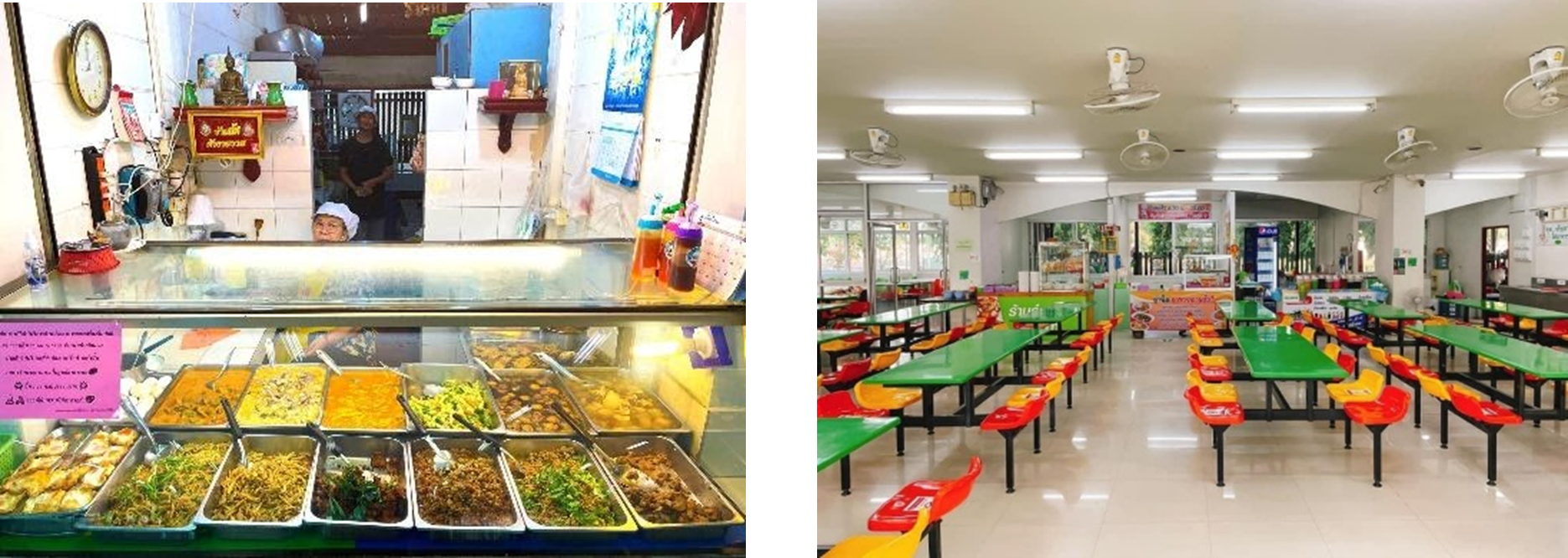
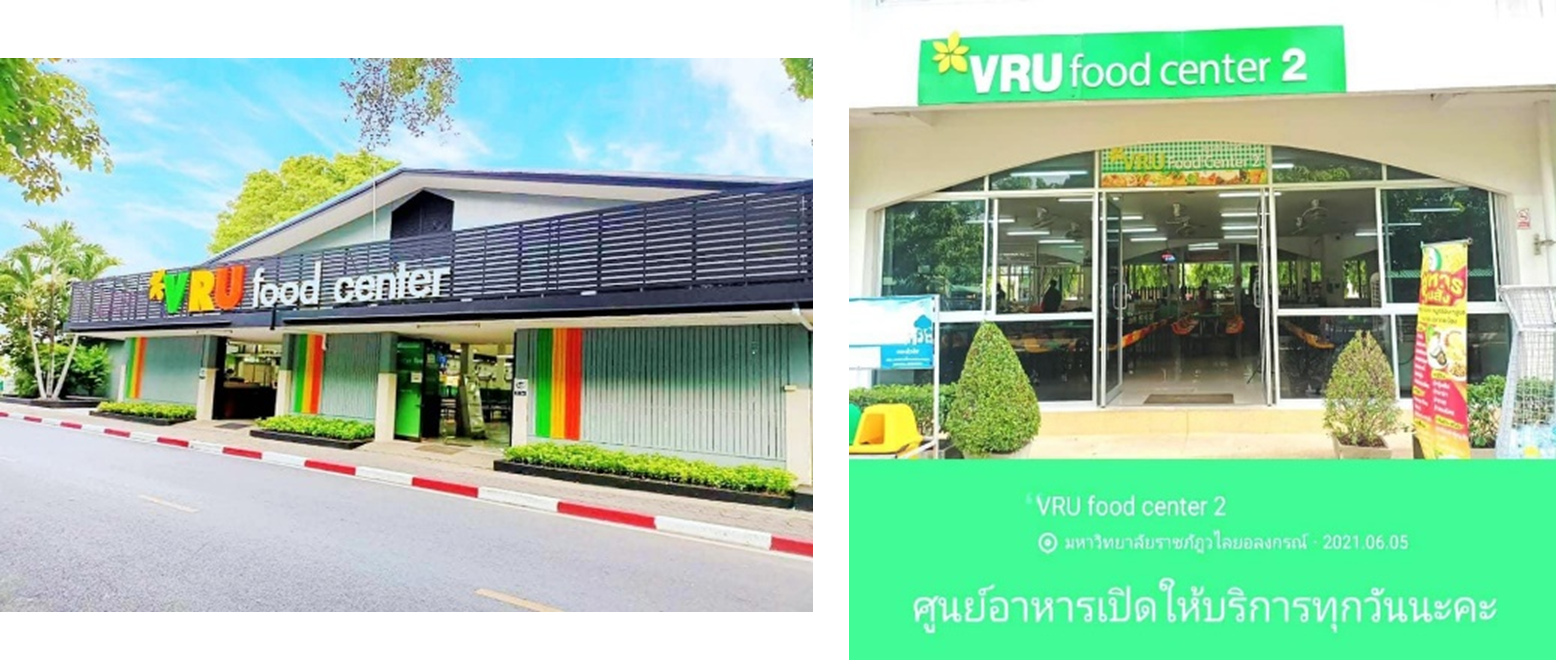
Figure3 Canteen service
- 2. Accommodation
VRU offers student accommodation on campus at affordable prices. There are 1,094 spaces available in total, of which, 164 spaces are for male students and 930 spaces are for female students. In the past year, during the Covid-19 pandemic, the university has provided additional support for students who live on campus by reducing accommodation fees by 50%. In addition, VRU Food Center has helped dormitory students by selling food in front of their accommodation in order to reduce the risk of travelling outside the university area as well as complying with the social-distancing regulations.

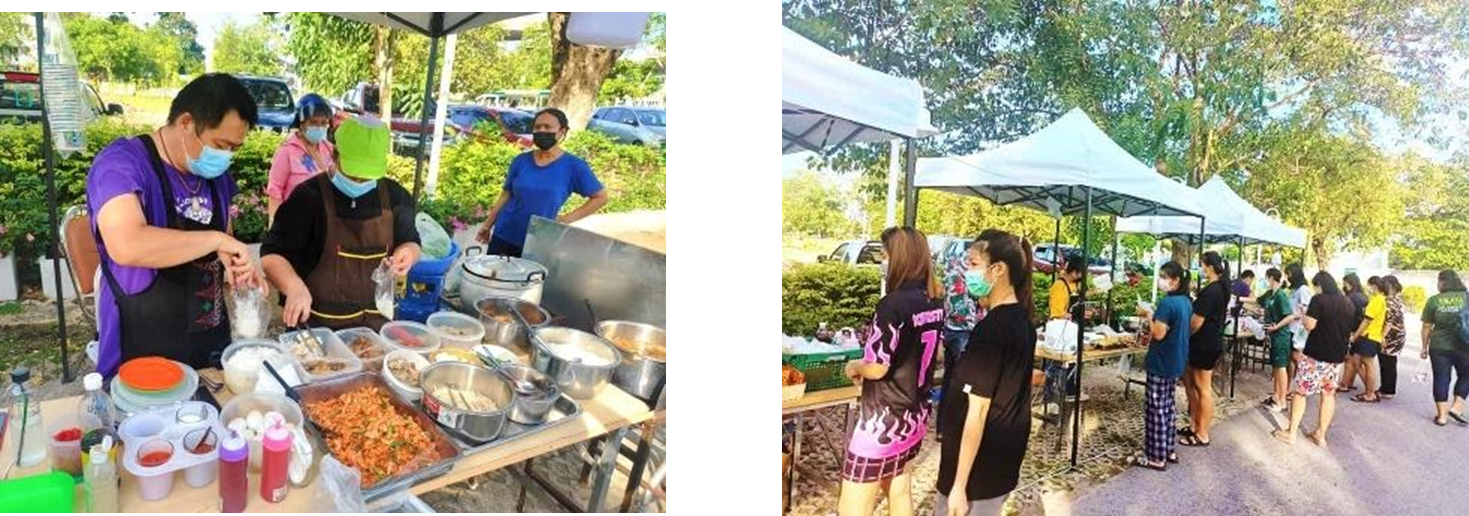
Figure 4 Accommodations service on campus
- 3. University transportation services
VRU provides the university-operated shuttle bus service free of charge to transport students around campus. Accordingly, the students can conveniently travel around campus without additional costs.
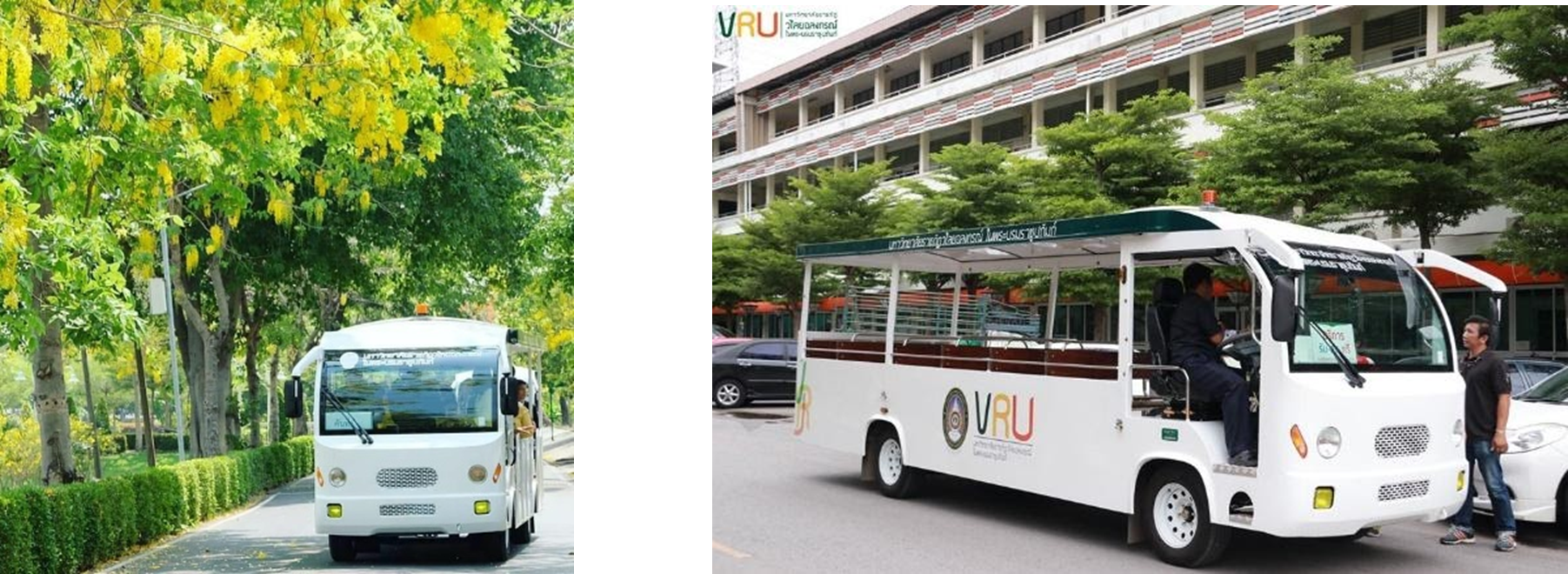
Figure 5 shuttle bus service
In 2021, VRU participated in the Integrated Sub-district Economic and Social Upgrading Project (U2T). This project aims to create economic recovery at a community level, alleviate poverty and uplift the economy and society in the sub-district through the employment of existing students, new graduates as well as the people in the local area to help develop and improve the local community in the sub-district. This project could raise the economic and social level of each sub-district, leading to poverty reduction. Currently, VRU is responsible for a total of 48 sub-districts. With each sub-district, the university can employ 5 existing students who receive 5,000 baht per month. There are 153 low income VRU students in total, participating in the U2T project.

Figure 6 The students from U2T project
VRU offers scholarships for 2 master’s students in the Innovation of Environmental Management Program, College of Innovation Management. These two students are Rashmi Chetia and Aisaengdow from Assam, India. This is a pilot project in performing the collaboration with India in educational management. VRU supports the tuition fees as well as the accommodation fees for these students.
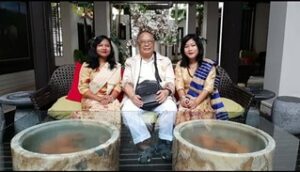
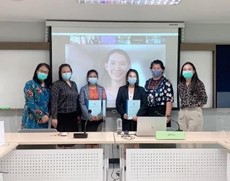
Figure 7 Indian students from Innovation of Environmental Management Program
VRU has assisted the local community in pursuing sustainable economy and society through the Integrated Sub-district Economic and Social Upgrading Project (U2T) in 16 sub-districts of Pathum Thani province, 14 sub-districts of Sa Kaeo province and 18 sub-districts of Phra Nakhon Si Ayutthaya province, totaling 48 sub-districts; and through the projects under the Rajabhat strategy for local development in 4 sub-districts of of Pathum Thani province and 5 sub-districts of Sa Kaeo Province, totaling 9 sub-districts.
All of these 57 sub-districts include different projects as shown in the following examples:
- 1. Developing job skills and creating new jobs (i.e. upgrading OTOP products/other jobs) through new product and community product development projects such as organic PathumThani rice leaf tea with high antioxidants, processing purple sweet potato into purple potato powder, innovation in processing dried noodles products from Eri silkworm proteins, food-seasoning products and chocolate covered silkworms.
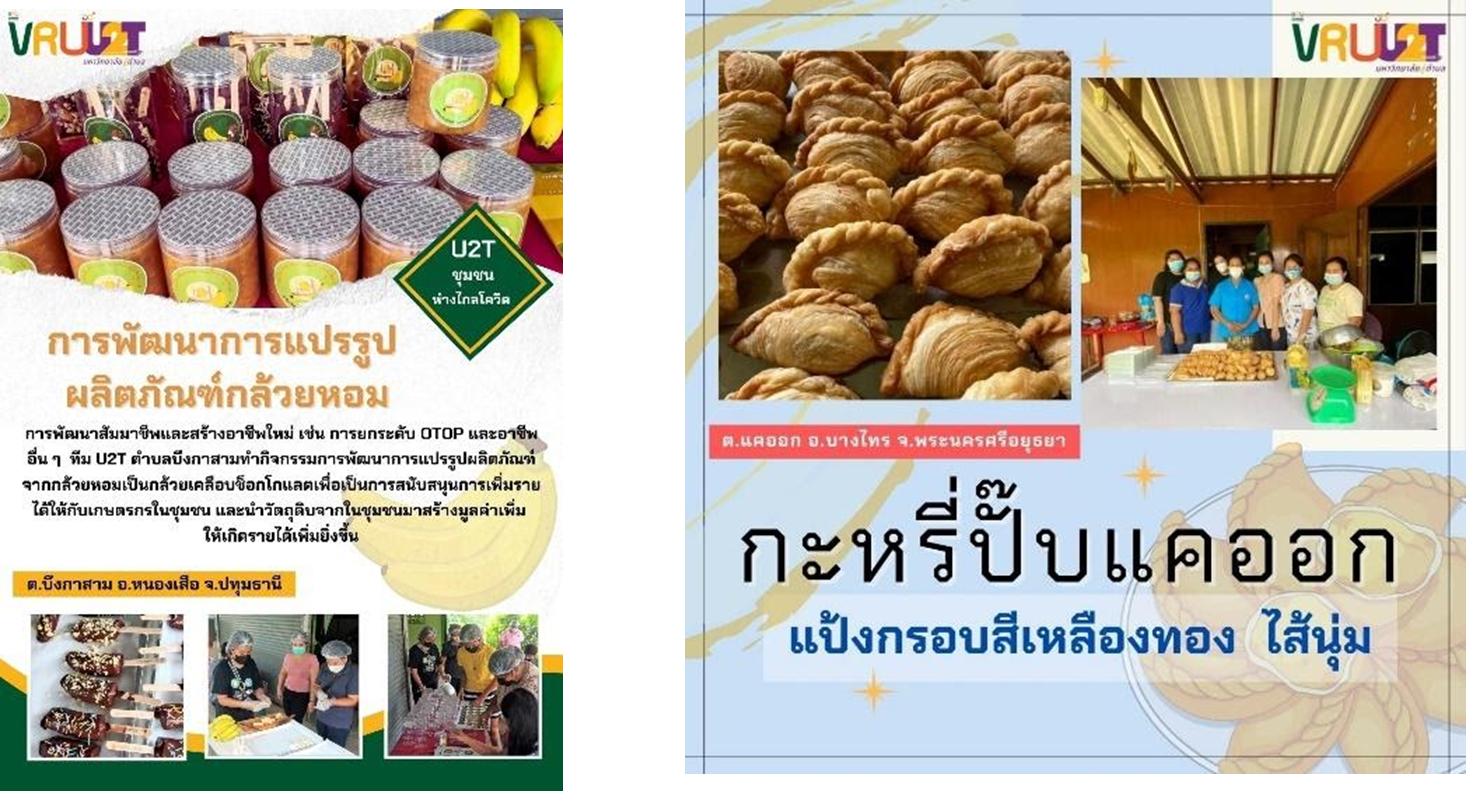
Figure 7 The example of projects related to developing job skills and creating new jobs (i.e. upgrading OTOP products/other jobs)
- 2. Creating and developing the creative economy through enhancing tourism projects such as adding value of Sabai Mon rags by developing the souvenirs from the Thai Raman cultural community, enhancing tourism through developing canopy as community products from the Thai Raman cultural community, creative tourism in Ban Kaeng sub-district community and developing community enterprise in Krachaeng Mee Dee Tourism Community.
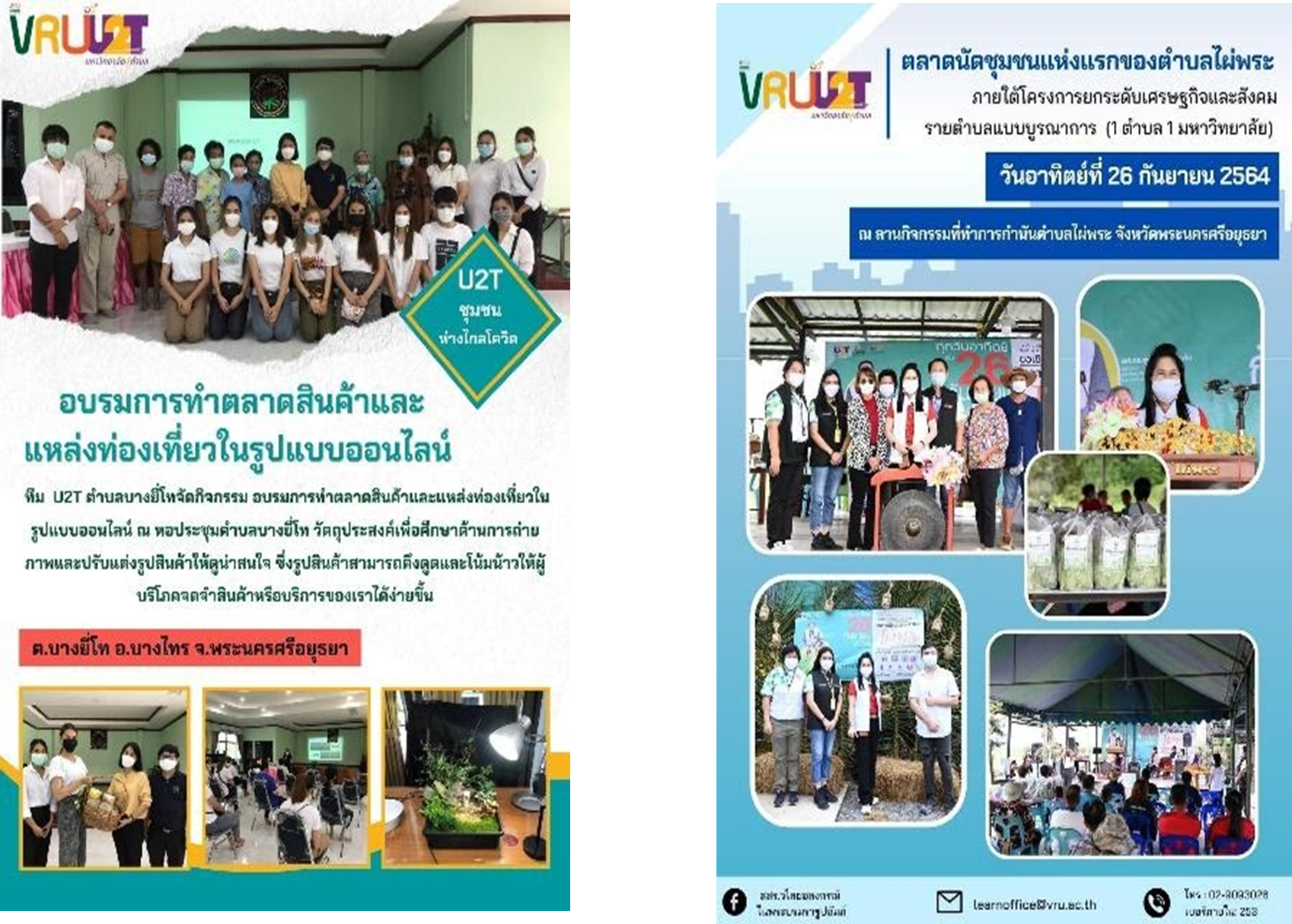
Figure 8 Creating and developing creative economy through enhancing tourism projects
- 3. Bringing academic knowledge to aid community support services (i.e. applying technology in aiding different support services) such as greenhouses for mushroom production, IoT-enabled smart farm, Thai herbal compress and massage oils for health massage, creating social managers to promote physical and mental health for the elderly and vulnerable people and innovating disinfectant spray machine for Covid-19.
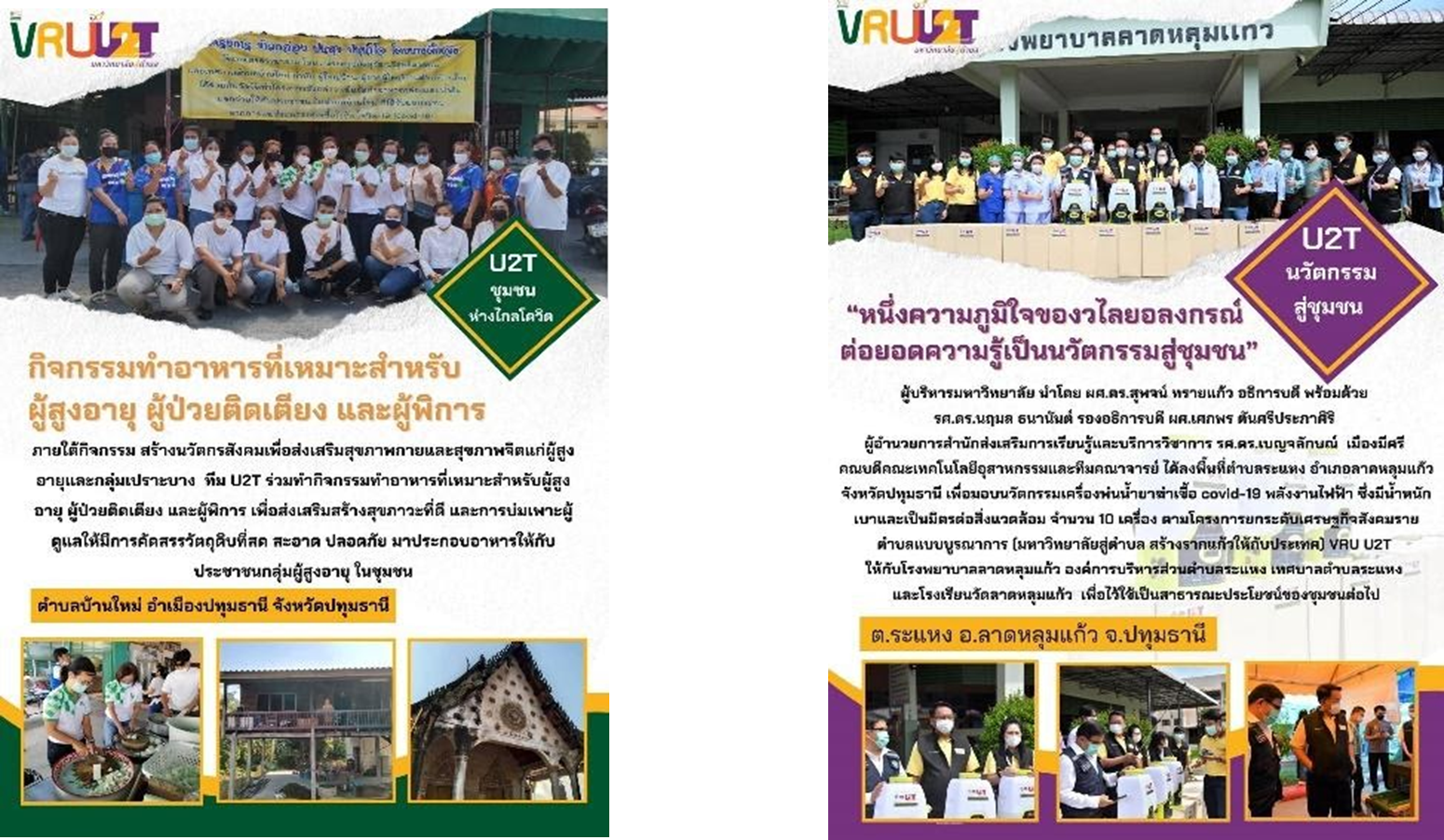
Figure 9 Bringing academic knowledge to aid community support services
- 4. Promoting the environmental responsibility and circular economy (as well as increasing sustainable income for the community) such as using rice straw to produce mushroom bales and using expired mushroom lumps to make compost, zero waste management, community waste management using online databases and turning household wastes into income and making paving blocks and recycled roads of wastes.
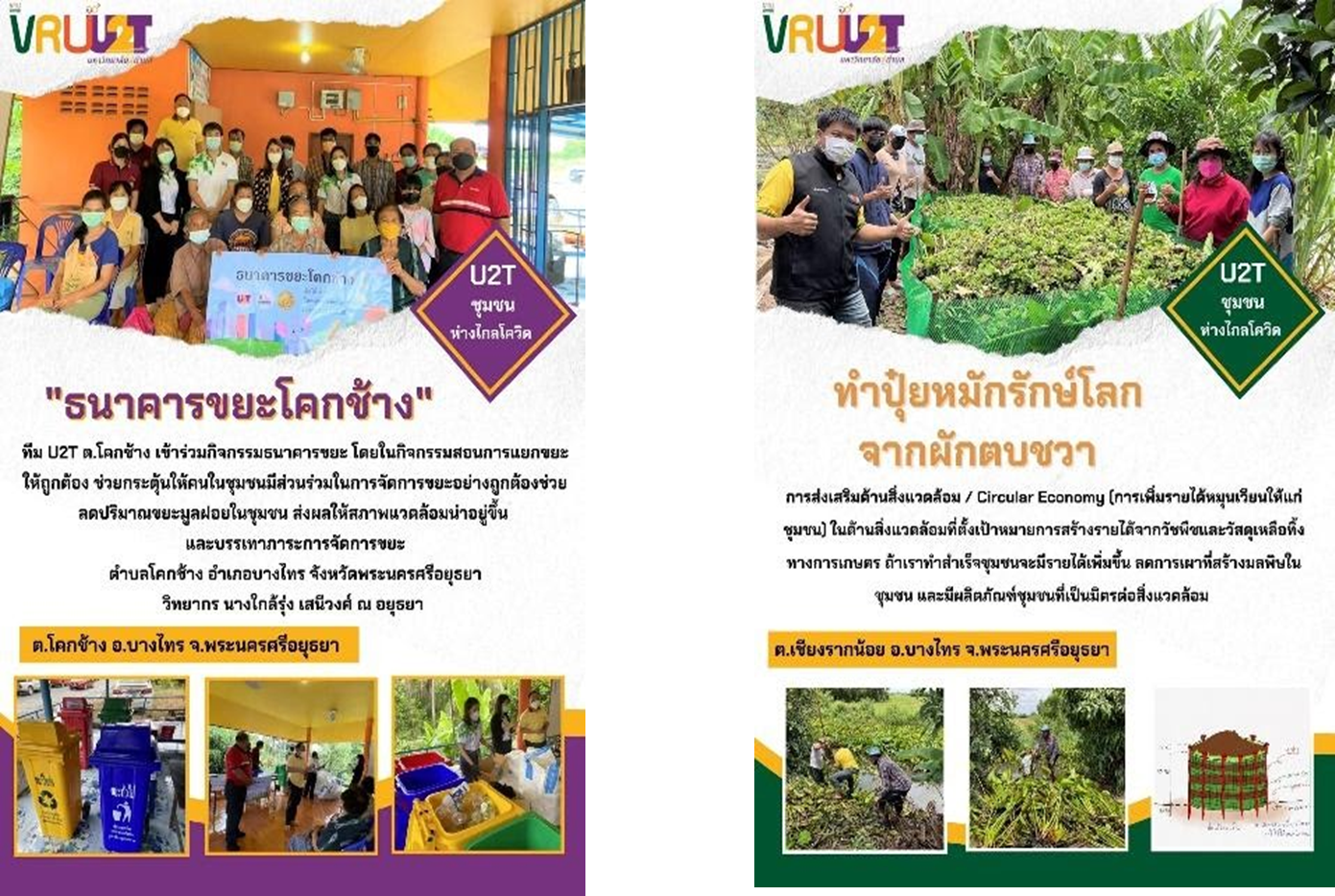
Figure 10 Promoting the environmental responsibility and circular economy (increasing sustainable income for the community)
- 5. Students are encouraged to participate in local community product development projects. The goal is to write a business plan for OTOP products for 5 local communities from 5 teams supported by the university, and 12 local community product development projects (OTOP) supported by VRU Research and Development Institutes.

Figure 10 Community product development projects
Table 2 The projects that support local communities to increase their income
| Type of project | Number of projects | |||
| Pathum Thani | Sa Kaeo | Phra Nakhon Si Ayutthaya | Total | |
| 1. Developing job skills and creating new jobs (i.e. upgrading OTOP products/other jobs) through new product and community product development projects | 20 | 19 | 18 | 57 |
| 2. Creating and developing creative economy through enhancing tourism projects | 20 | 19 | 18 | 57 |
| 3. Bringing academic knowledge to aid community support services (i.e. applying technology in aiding different support services) | 20 | 19 | 18 | 57 |
| 4.Promoting the environmental responsibility and circular economy (increasing sustainable income for the community) | 20 | 19 | 18 | 57 |
| 5. Community product development projects | 17 | 17 | ||
| Total | 97 | 76 | 72 | 245 |
The university has provided financial assistance to local communities through operations under the Rajabhat strategic budget for local development and the Integrated Subdistrict Economic and Social Upgrading Project (U2T). However, VRU does not provide direct monetary support to the local communities. Rather, VRU uses the budget to prepare collaborative operations between the university and the local community and analyse available local resources and development opportunities. Regarding the operations, the university takes responsibility for providing a development plan, capital, materials, equipment and in-depth knowledge while working collaboratively with people in the local community. The ultimate goal is to assist the local communities to be able to sustainably live on their own.

Figure 11 Supporting local community activities
VRU provides training and fundamental knowledge for local communities to make healthy and sustainable living. This can be classified to 3 types of project as follows:
- 1. Educational Development Project
VRU focuses on teacher development and teaching and learning management. This is the core strength of the university since VRU originated from a teacher college and has a demonstration school as a model school. VRU believes that “Education is security” and hence, the projects in this area have been implemented.

Figure 12 Educational Development Project
- 1. Local Community Level
VRU has conducted the local and community operations and project implementation under the cooperative framework of government and local government organisations at all times. Each project is initiated by meeting and discussing with the district chief who is responsible for a particular area to gain an understanding of the current government policies in that area and jointly formulate relevant policies for both parties to end poverty. After that, the university will coordinate with the local administrative organisations, sub-district headmen and village headmen to set goals for further collaborative work. The ultimate aim is to develop sustainable local communities.
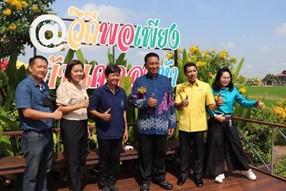
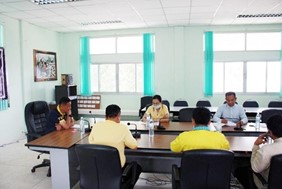
Figure 14 A joint formulation of poverty policies at the local community level
- 2. Regional Level and provincial level
VRU has conducted operations for enhancing the quality of life of local communities under the leadership of Asst. Prof. Dr. Supot Saikaew, President of VRU, along with Vice President and the Governors of Pathum Thani and Sa Kaeo Provinces by introducing a new strategy for local development, according to His Majesty the King’s policy. This is linked to the provincial development strategy by collaboratively driving operations to improve the quality of life of the local community and as well as developing learning centres in accordance with the philosophy of a sufficiency economy.

Figure 15 A joint formulation of poverty policy at the regional level and the provincial level
- 3. National Level
VRU is a Rajabhat University that brings His Majesty the King’s educational policy for local development. There is participation from 38 Rajabhat Universities and the Presidents of all Rajabhat Universities held regular meetings to discuss and emphasise on utilising academic knowledge to enhance the development of local communities and improve the quality of life as well as improving the quality of education of students in local schools and the graduates to have professional expertise that meets global standards. This incorporates the King’s philosophy as the core concept in pursuing sustainable development. The solution to poverty is operated under Local Development Strategy 1.
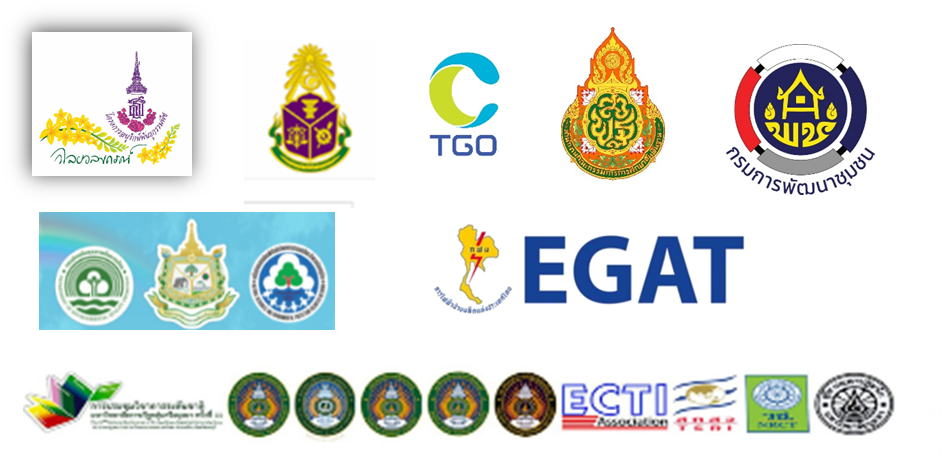
4. Global Level
VRU has international cooperation with Xi’an University with a commitment to jointly implement VRU Xi’an Community Engagement Project, aiming to comprehensively alleviate poverty in targeted communities as the context of the Xi’an City area in the People’s Republic of China has similar industry, tourism and agriculture characteristics to Pathum Thani and Sa Kaeo provinces which are where both VRU campuses located in. Xi’an University is a higher education institution that plays an important role and acts as a model university for solving the problem of poverty in the targeted communities near campus. Similarly, VRU aims to become a university for local development which has an important mission to drive poverty alleviation projects and improve the quality of life in the local community. This is done by exchanging knowledge on local operations and developing community potential among faculty staff of both universities to be able to drive projects that alleviate poverty and sustainably improve the quality of life of the target communities near both Xi’an and VRU campuses.



